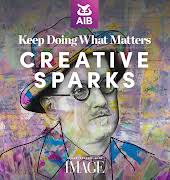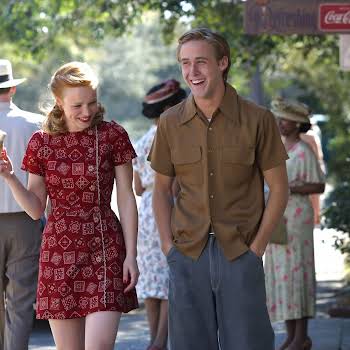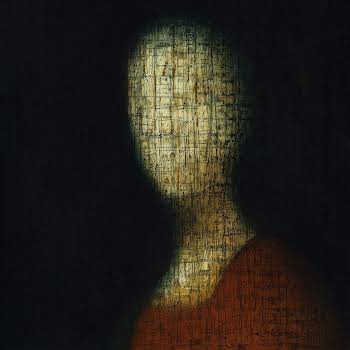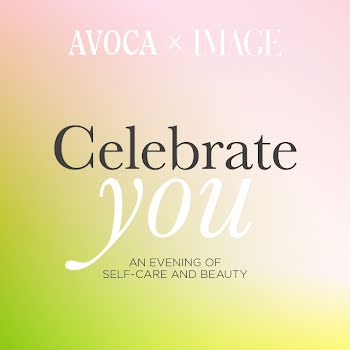Baby blues: Is maternal mental illness still too taboo to portray realistically
By Sophie White
26th May 2018
26th May 2018
Tully proves that as a society we are still too uncomfortable with maternal mental illness to depict it as anything other than fantasy or horror says Sophie White
(Sidenote: For anyone who’s yet to see Tully, turn back there are spoilers below.)
“You have to see Tully,” everyone said. “You’ll love it, Sophie. It’s so real.” I was being identified as a future fan most likely because I have complained in virtually every medium available (digital, print, book and podcast) about the lie society is selling about motherhood. Upon becoming a mother I felt instantly betrayed by what I felt was a large-scale, all-pervasive CON new mothers were being hit with – namely that motherhood is a joy-filled, sweet-smelling celestial gift rather than the trying, draining sometimes rewarding, often lonely state that it in fact is.
So I went to see Tully excited for some realism about motherhood and excited to watch the work of two of my favourite talented women (writer, Diablo Cody has given us Juno and Jennifer’s Body, and Charlize Theron plays the main character). And while Tully does a lot of good in dispelling the harmful mythology we’ve cooked up around motherhood, it proves yet again that we can’t seem to look maternal mental illness squarely in the eye.
To begin with, Tully feels like a mumblecore-style (think Little Miss Sunshine vibes) take on the monotony of early motherhood. Marlo played brilliantly by Theron, has just become a mother for the third time. Her life is essentially my life. Her marriage seems solid if a little lacking in affection and intimacy. Her young son is having issues at school. There are some oblique references to Marlo having previously suffered from postnatal depression but it’s really only hinted at. Her wealthy brother gifts the couple a night nurse to ease the newborn stage and allow Marlo some rest and respite from those lonely chaotic early days – portrayed in a series of poignant and hilariously repetitive montages.
At times, Marlo seems somewhat numb to her circumstances, in a particularly affecting scene she watches a (bizarre) reality show called Gigolos – which incidentally is a real show about male gigolos in Las Vegas – and a single tear rolls down her cheek. At others, she screams in a car park, succumbing to the primal rage and frustration we all feel as parents.
Enter the titular Tully, a night nurse that is part millennial Mary Poppins and part cool girl best friend. Marlo and Tully instantly bond and the mood shifts into one of distinct optimism. We see Marlo bring cupcakes to her son’s school, she appears to start caring for herself a little more and engaging with her children. However, all is not what it seems and in the third act the dramedy realism veers abruptly into a slightly confusing realm of fantasy starting with an unlikely threesome between Marlo, Tully and Marlo’s husband. Tully goes on to encourage Marlo to drive drunk resulting in a crash and Marlo’s hospitalisation. It is at this point barely minutes from the end that we learn the truth behind what we’ve been watching. Tully was never there but rather was a manifestation of (though it is not confirmed) most likely postnatal psychosis. It’s an illness that is rarely depicted in film beyond the genre of horror, which is obviously offensive and reductive in the extreme. The twist has provoked some extreme reactions, from anger at the misleading advertising around Tully and lack of trigger warnings to mental heath professionals despairing at the fact that Tully is not seen to receive treatment for her illness.
Culturally, we seem to be extremely wary of depicting realistic portraits of mentally ill mothers. Instead, what we have is a lot of allegorical references to maternal mental illness, not all of them particularly helpful in terms of de-stigmatising these illnesses. 2014’s psychological horror The Babadook, saw a mother grappling with unresolved grief and postnatal mental illness embody the role of a very ambiguous villain. Baby Blues, a 2008 film in the horror tradition was based on a real-life tragic case and essentially applied the Slasher format to the extremely real and devastating disorder.
The biggest issue arising from these fantastical depictions of postnatal mental illness is that these conditions are already woefully misunderstood by many, and while the intentions behind films like Tully may be to start a much-needed conversation, it does seem interesting that even on a fictional level we, as a society, are reluctant to engage with the realities of maternal mental illness.
Other mental disorders have been represented with a degree of realism for decades now, but postnatal depression and postnatal psychosis are rarely afforded the same realistic and nuanced depictions.
Take Tully herself. As delusions go, she is a benign figure who is soothing to Marlo, but the reality of postnatal psychosis and postnatal depression is far more terrifying, and in some (thankfully rare) cases dangerous.
“I am frightened to live inside myself. I am ill. I am a thing possessed, an animal, caged,” wrote Jessica Pidsley, who suffered from postnatal psychosis and is author of the blog Mutha Courage.
The ambiguity around Tully is a tricky one for me as a viewer, I felt it was harmful to tell this story, yet not give a name to the illness Marlo is suffering from nor depict (in explicit terms) her receiving effective treatment for her disorder. PND is under-reported as it is and while Tully is shedding some much-needed light on these illnesses, I don’t believe it has done any of the valuable work it could’ve in offering hope and de-stigmatising the illness. In interview with IMAGE.ie ‘Claire’ a woman who attempted to take her own life while in the throes of severe postnatal depression explained:
“I had no history of mental illness and I thought once you were in the psychiatric services that were you for the rest of your life. So it discourages you from going to get help because you’d rather not be in that box… I think I had an element of secondary depression as I was so stigmatised by what had happened.”
Films are at the end of the day, largely about entertainment but Tully baffles, in that it seemed to want to take on an important story but fell short on truly delivering its message. The ambiguity about Marlo’s condition and little reference to treatment, unfortunately served only to undermine what could have been truly honest look at maternal mental illness.
Photo by Julie Johnson on Unsplash























